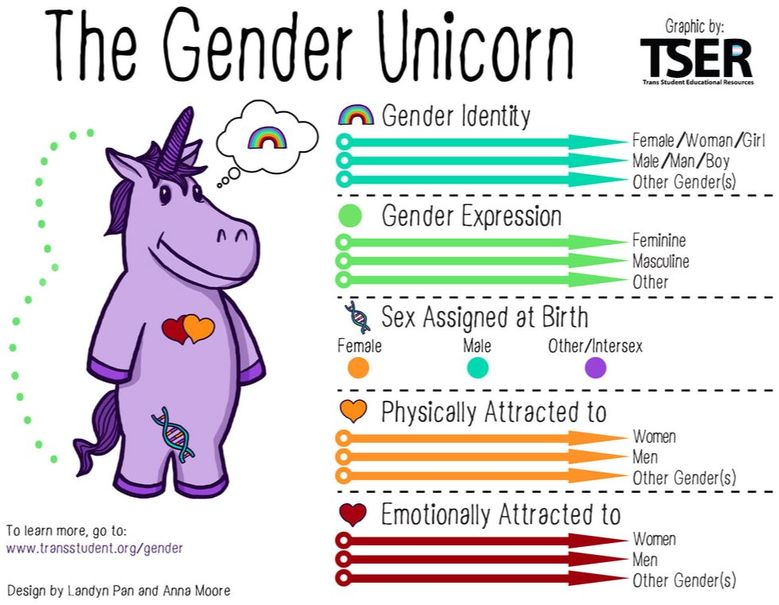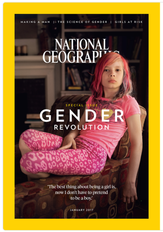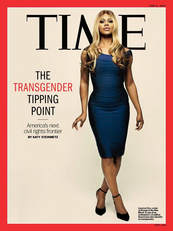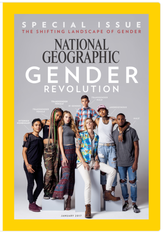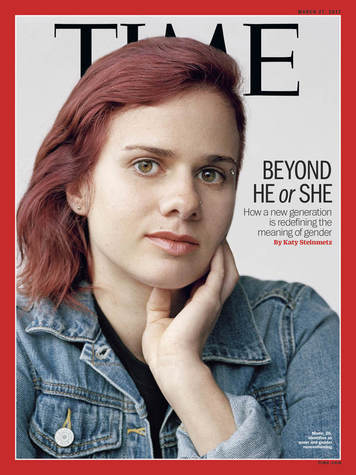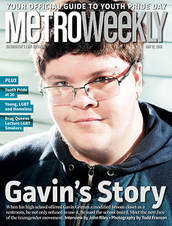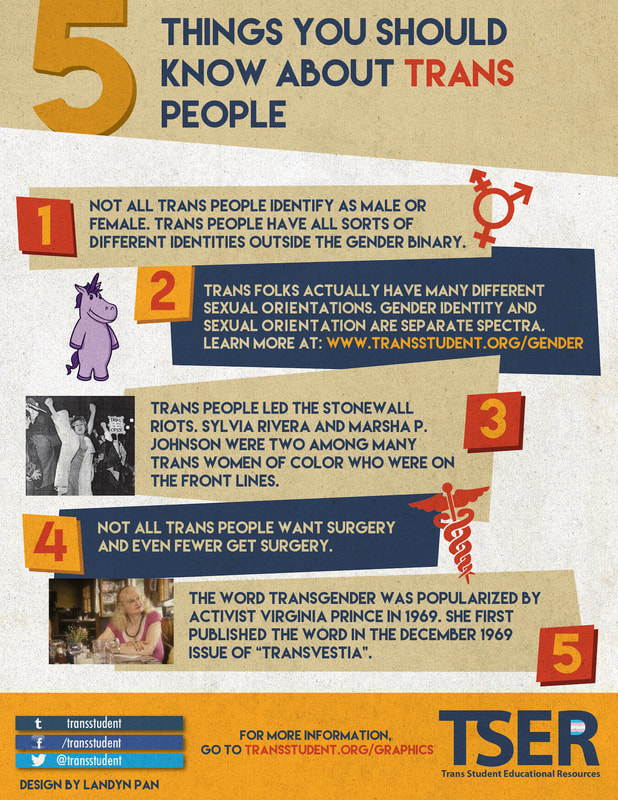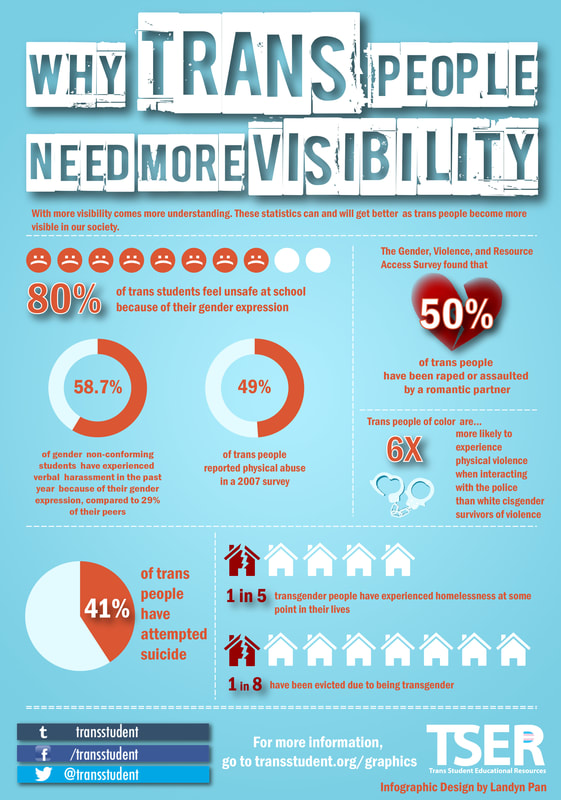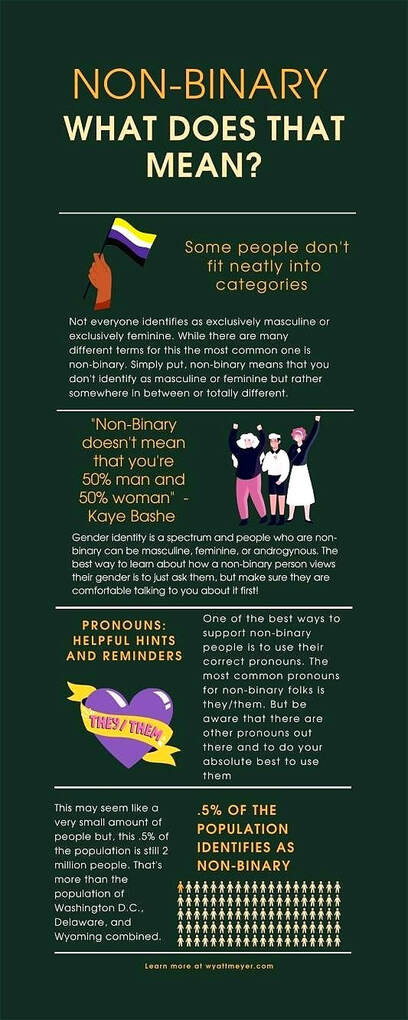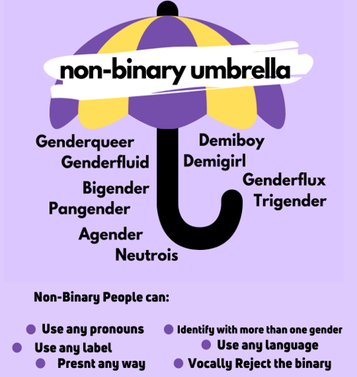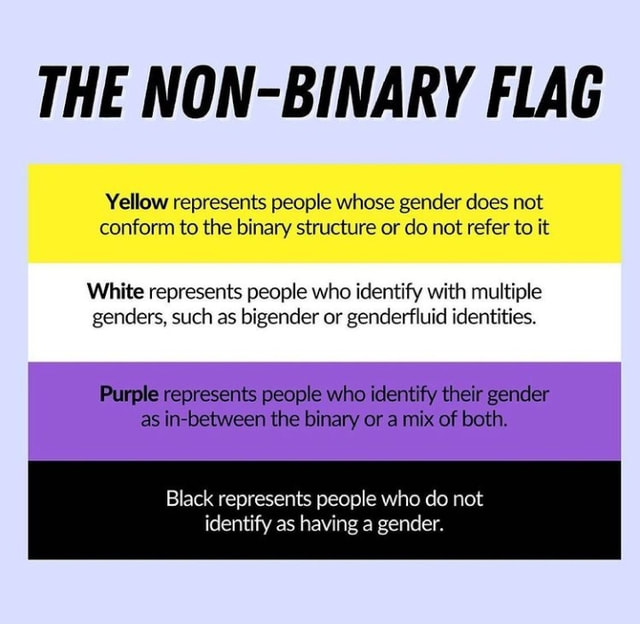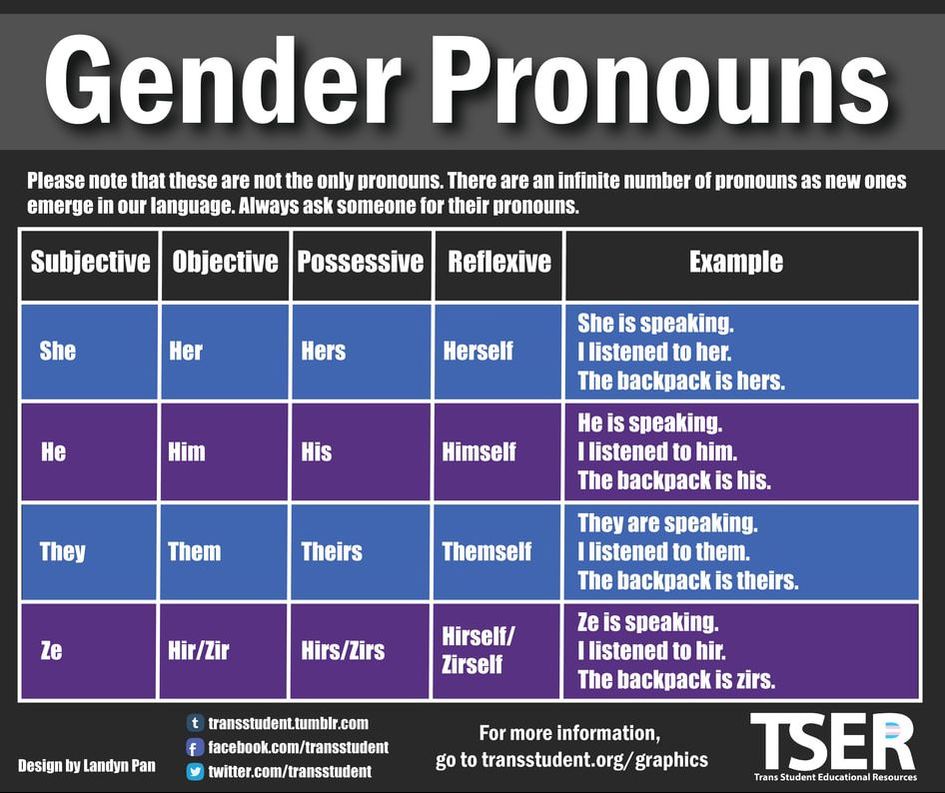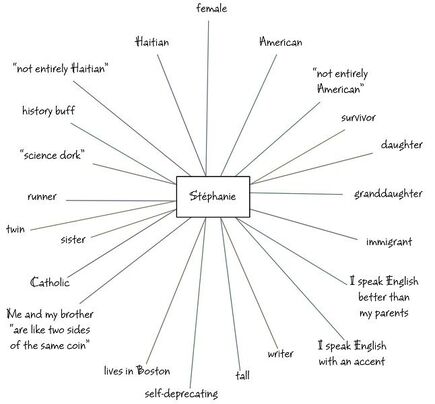Biological sex, gender identity, gender expression, sexual orientation. Each term speaks to a unique part of a person's identity--thus, they aren't interchangeable. Check out the definitions of each of these terms below and consider how you might identify different aspects of yourself.
|
Gender identity is a person’s internal sense of being a man, woman, neither, or both. People become aware of gender identity as early as age 3-5! Although parents & others tend to initially define gender identity, it is actually self-defined. Gender expression is how you represent your gender through clothing/fashion, hairstyle, makeup, grooming, personality, expression of interests & activities, speech & body language. Gender expression can shift depending on context and across a lifetime. Sex assigned at birth is determined by sets of physical characteristics that tend to cluster together (e.g. hormones, genitalia, chromosomes). But sex isn’t a binary! Sexual orientation refers to the gender(s) who you are physically and/or emotionally attracted to. Examples of sexual orientation include lesbian, gay, bisexual, pansexual, asexual, queer, etc.. |
What does it mean to be Transgender?
Trans(gender) is a term used to describe people whose gender identity is not the same as their gender assigned at birth.
There are a lot of different ways that a transgender person's gender identity might differ from their gender assigned at birth. A person might identify as exclusively male or exclusively female, they might identify as both male and female, they might identify as neither male or female, or perhaps they might define themselves as genderfluid, among other descriptors.
Remember, identifying as transgender does not tell you about how a person might express their gender in clothing/fashion, hairstyle, personality expression, speech or body language, nor does it tell you about who the person might be attracted to. Gender identity is about who you are, not how you present to the world or who you are attracted to and love.
Check out more information below to learn more about the transgender community and perhaps clarify some of your assumptions. Also make sure to check out why trans visibility and advocacy for trans health and well-being matters.
There are a lot of different ways that a transgender person's gender identity might differ from their gender assigned at birth. A person might identify as exclusively male or exclusively female, they might identify as both male and female, they might identify as neither male or female, or perhaps they might define themselves as genderfluid, among other descriptors.
Remember, identifying as transgender does not tell you about how a person might express their gender in clothing/fashion, hairstyle, personality expression, speech or body language, nor does it tell you about who the person might be attracted to. Gender identity is about who you are, not how you present to the world or who you are attracted to and love.
Check out more information below to learn more about the transgender community and perhaps clarify some of your assumptions. Also make sure to check out why trans visibility and advocacy for trans health and well-being matters.
|
Janet Mock is an author, advocate, TV and podcast host. She began her career as an editor at People.com before stepping forward with her story of growing up as a trans teen in Honolulu in a 2011 feature in Marie Claire Magazine.
She is the New York Times bestselling author of two memoirs, Redefining Realness (2014), a memoir which was the first biography written from the perspective of a young trans person, and Surpassing Certainty (2017). a memoir about the years in her life when she was not public about being trans. |
|
What does it mean to be non-binary?
Those who are non-binary identify outside of the gender binary, meaning that they do not identify as a man or a woman, do not identify with a gender at all, or identify with more than one gender identity. Some other terms that represent this identity include genderqueer, agender, genderfluid, and bigender. Check out the graphics below to learn more about identifying outside of the gender binary.
Those who are non-binary may present and express themselves in ways that are androgynous, feminine, masculine, a combination of these expressions, or none of these expressions. There is no one way to be non-binary as gender identity is personal and unique to each person. Additionally, non-binary individuals may identify with multiple identities that fall under the LGBTQPIA+ umbrella. For example, those who are non-binary may also identify as transgender, lesbian, gay, pansexual, and so on. Therefore, we need to have a comprehensive understanding of intersectionality and how that informs each person's experiences and interactions with gender.
Check out the link below to read more about people whose identities fall outside of the gender binary and how we can support them.
Check out the link below to read more about people whose identities fall outside of the gender binary and how we can support them.
The Importance of Pronouns
We use pronouns as a way to identify or refer to someone, and we communicate information about gender through the use of pronouns. Gendered language has an impact on the lives of trans people and others who live beyond the confines of gender binaries because it misidentifies them. That is, mistaking their pronouns mistakes their gender. Essentially, it's like being called by a different name. Thus, using appropriate pronouns shows respect for a person's identity.
|
Many people don't even recognize how much they use gendered language in everyday conversation. And, it can be difficult at first to make the switch. Below are some tips to get started.
How do I ask about pronouns?
Ways to make your language more inclusive:
Mistakes are going to happen as you try to adjust your language. Apologize if you do make a mistake and correct it. Be patient with yourself and keeping practicing to strengthen that muscle. |
Reminder: You define your own identity and expression.
Members of the LGBTQPIA+ community may be faced with expectations for how they are "supposed to" behave or present themselves. However, there is no one way to be queer, no one way to be non-binary, or no one way to be trans. Only you can define your identity and how you choose to express it. Everyone exists at unique intersections of identity that inform their lived experience and perspectives on the world around them. You may choose to place equal importance on all of your identities, or you may find that certain personal identities carry more weight than others.
|
One helpful strategy in exploring your different intersections of identity is a social identity map, as shown to the right. Grab a piece of paper and start the activity by writing your name in the center. Next, take 5-10 minutes to write down your identities, values, interests, or personality traits, drawing a line from your name to each aspect of your identity. Some examples of identities that you can write down include: gender, sexual orientation, nationality, race, religion, academic interests, traits within yourself that you value, traits within yourself that you would like to work on, and so on. Once finished, you may choose to share this identity map with others or keep it for yourself.
|
Some of our identities are fixed, others are constantly in flux. Thus, defining and understanding your identity is a lifelong process that is informed by your experiences, environment, and growth. Give yourself space to explore and experiment with the different facets of yourself and how you choose to express them. While members of the LGBTQPIA+ community may struggle with embracing and openly expressing their authentic self due to queerphobia/biphobia/transphobia, living outside of the social construction of heteronormativity and/or cisnormativity can be positive and transformative. The LGBTQPIA+ experience provides an opportunity to discover yourself in a way that many others—notably those who are confined by hetero/cisnormativity—do not.
Interested in learning more?
Click below to browse a glossary of different LGBTQ+ related experiences and identities!
Proudly powered by Weebly

